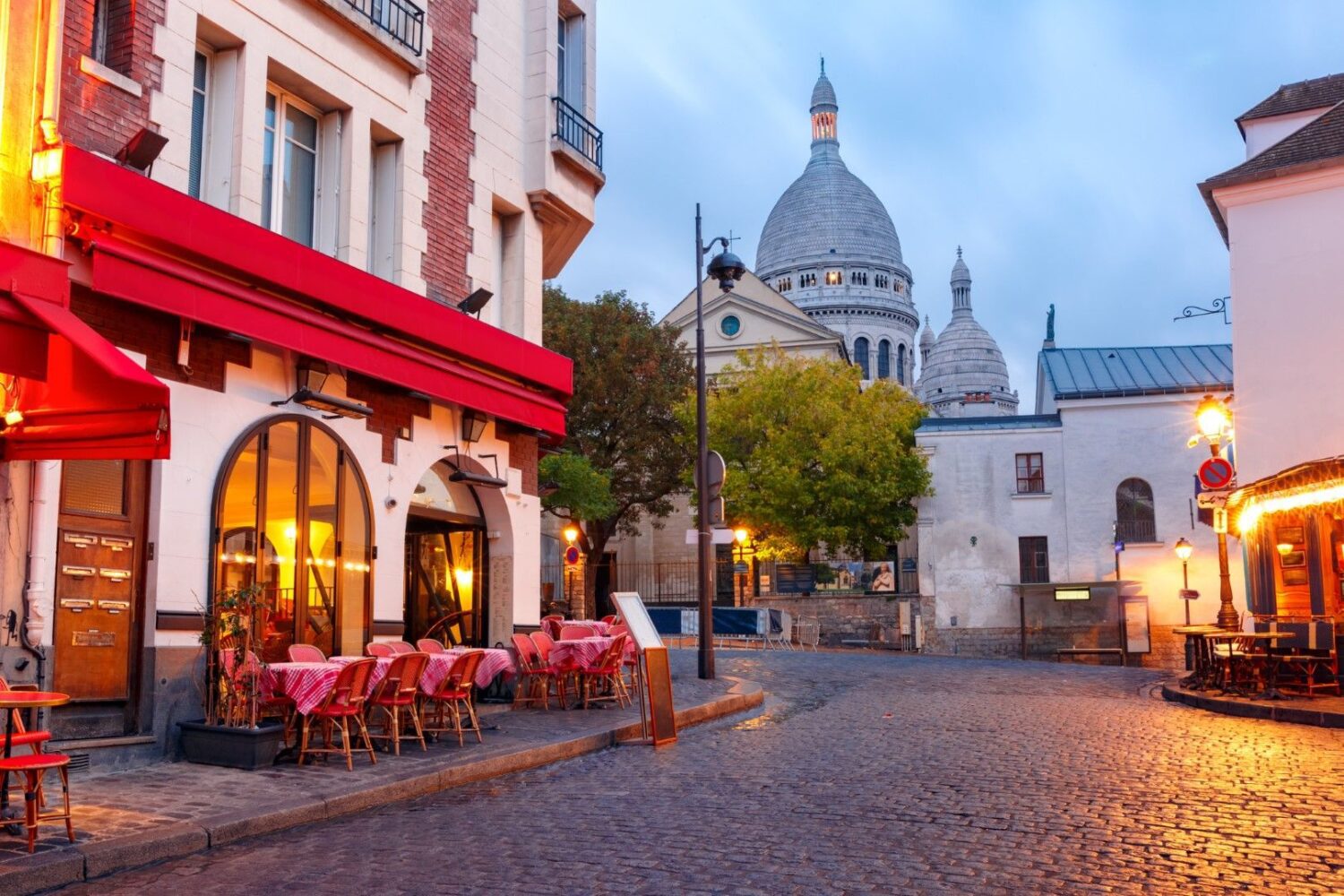An urban legend that goes back to a 228-year-old restaurant in Paris
If in an American movie the action takes place in France, the characters are definitely sitting on the terrace of a bistro, drinking wine and watching passers-by, even if they have serious dramas to resolve.
The bistro is one of the most French things that can exist on this earth.
However, urban legends link the etymology of the word “bistro” to the Russian troops who besieged the city after the Napoleonic Wars.
As far as this is true and can the origin of the bistro as a culinary institution be traced?
How did the French bistro appear?
Historical records show that the bistro most likely originated from the kitchens located on the ground floor of the Parisian apartments. At that time, tenants usually paid for accommodation and food. The owners found that they could earn extra money by opening their kitchens to outside visitors. The menu consisted mainly of simple dishes that could be cooked in large quantities and last a long time without spoiling. Coffee and wine were also offered with the meal.
Another story reveals the foundations of the bistro in high unemployment in the Auvergne region in the mid-19th century. The unemployed men began to flock en masse to Paris in search of a livelihood. They did the lowest paid job that no one else wanted to do – they brought coal and water and washed the floors. The more enterprising found a way to expand their income by opening so-called “coal cafes”. The men carried coals, and the women served unpretentious meals that were in the pockets of the working class.
Even today, the bistro is a place dedicated to ordinary food. The menu is short and includes small plates of light dishes designed to suit the alcoholic and hot drinks on offer. Prices are moderate. You can have coffee or a glass of wine in the bistro throughout the day and chat with friends. The tables are usually small in number and there is no requirement for formal wear.
The Russian trail and one of the oldest bistros in Paris
The restaurant “La Mer Catherine” still welcomes its customers on the Place de la Terte in the 18th district of Paris. It is hard to imagine that this place first opened its doors 228 years ago!
A metal sign at the entrance to La Mer Catherine tells the urban legend about the appearance of the word “bistro”. According to what is written, the date was March 30, 1814. Napoleon’s empire is living its last days. Prussians, Austrians, Bavarians and Russians are at the gates of Paris. France capitulates. The Russian tsar and his troops invade Paris.
Around this time, Russian soldiers were eating at La Mer Catherine. And of course, they drink. When they order their drinks, they keep repeating “quick, quick!” (“fast fast!”). There are many Cossacks among the soldiers – you can imagine how eagerly they waited to quench their thirst. And it is not known whether their bosses will not suddenly appear from somewhere and catch them in the act.
The word “fast” is imprinted in the memory of the French and according to rumors is gradually becoming a name for a place where you eat and drink quickly.
The story is interesting, sounds somewhat logical and attracts tourists. However, many French linguists reject this theory because, according to historical records, the word “bistro” was not widely used before the end of the 19th century. It first appeared in a written source in 1884.
Another version suggests that its etymology comes from a local word that existed in several variants – “bistro”, “bistrot”, “bistraud” or “bistrouille”.
How much longer will the French bistro exist?
If you rummage through the publications on the Internet, you can not help but notice that almost every year for the last decade, some world media makes an analysis on “Is the French bistro disappearing?”. An initiative group has even suggested that the inclusion of French art de vivre in French bistros be part of UNESCO‘s intangible heritage. If it needs to be protected by UNESCO, then it is in danger of extinction, right?
About 30 years ago, bistros were about half of the restaurants in Paris. Today they are below 15%. The reasons are complex and numerous, but the change in lifestyle and eating habits of the new generations are among the main ones. Young French people prefer to sit in cafes of world chains such as Starbucks, and home deliveries, which became especially popular during the pandemic, keep people at home for lunch.













 English
English French
French Spanish
Spanish German
German Dutch
Dutch Italian
Italian Danish
Danish Portuguese
Portuguese Greek
Greek Russian
Russian Swedish
Swedish Bulgarian
Bulgarian Hungarian
Hungarian Catalan
Catalan Ukrainian
Ukrainian Polish
Polish Basque
Basque Chinese (Simplified)
Chinese (Simplified) Japanese
Japanese Hebrew
Hebrew Arabic
Arabic Swahili
Swahili Amharic
Amharic Irish
Irish Afrikaans
Afrikaans Albanian
Albanian Armenian
Armenian Azerbaijani
Azerbaijani Belarusian
Belarusian Bengali
Bengali Bosnian
Bosnian Cebuano
Cebuano Chichewa
Chichewa Chinese (Traditional)
Chinese (Traditional) Corsican
Corsican Croatian
Croatian Czech
Czech Esperanto
Esperanto Estonian
Estonian Filipino
Filipino Finnish
Finnish Frisian
Frisian Galician
Galician Georgian
Georgian Gujarati
Gujarati Haitian Creole
Haitian Creole Hausa
Hausa Hawaiian
Hawaiian Hindi
Hindi Hmong
Hmong Icelandic
Icelandic Igbo
Igbo Indonesian
Indonesian Javanese
Javanese Kannada
Kannada Kazakh
Kazakh Khmer
Khmer Korean
Korean Kurdish (Kurmanji)
Kurdish (Kurmanji) Kyrgyz
Kyrgyz Lao
Lao Latin
Latin Latvian
Latvian Lithuanian
Lithuanian Luxembourgish
Luxembourgish Macedonian
Macedonian Malagasy
Malagasy Malay
Malay Malayalam
Malayalam Maltese
Maltese Maori
Maori Marathi
Marathi Mongolian
Mongolian Myanmar (Burmese)
Myanmar (Burmese) Nepali
Nepali Norwegian
Norwegian Pashto
Pashto Persian
Persian Punjabi
Punjabi Romanian
Romanian Samoan
Samoan Scottish Gaelic
Scottish Gaelic Serbian
Serbian Sesotho
Sesotho Shona
Shona Sindhi
Sindhi Sinhala
Sinhala Slovak
Slovak Slovenian
Slovenian Somali
Somali Sundanese
Sundanese Tajik
Tajik Tamil
Tamil Telugu
Telugu Thai
Thai Turkish
Turkish Urdu
Urdu Uzbek
Uzbek Vietnamese
Vietnamese Welsh
Welsh Xhosa
Xhosa Yiddish
Yiddish Yoruba
Yoruba Zulu
Zulu